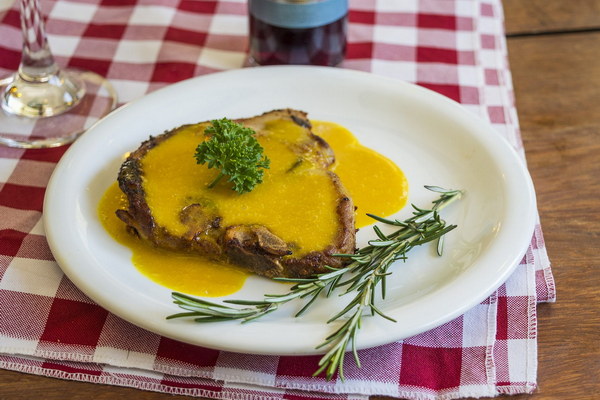The Art of Nourishment Secrets to Traditional Chinese Food Remedies
In the rich tapestry of traditional Chinese medicine, the concept of food as medicine stands as a cornerstone. Known as Shi Bu in Chinese, this practice emphasizes the importance of nourishing the body with the right foods to promote health and prevent illness. Here, we delve into the secrets behind this ancient art of food remedies.
The Philosophy of Shi Bu
The essence of Shi Bu lies in the belief that certain foods possess healing properties that can address specific health concerns. This philosophy is deeply rooted in the understanding of the five elements—wood, fire, earth, metal, and water—which are believed to correspond to various organs and bodily functions. By balancing these elements through the foods we consume, we can achieve harmony and well-being.
The Five Elements and Their Associated Foods
1. Wood Element: Green Vegetables
- Foods such as spinach, kale, and asparagus are rich in chlorophyll, which is thought to support the liver and gallbladder, organs associated with the wood element.
2. Fire Element: Red Fruits and Vegetables
- Red fruits and vegetables like tomatoes, red peppers, and strawberries are associated with the fire element and are believed to nourish the heart and small intestine.
3. Earth Element: Root Vegetables and Grains
- Root vegetables like carrots, beets, and sweet potatoes, as well as grains such as rice and barley, are connected to the earth element and are thought to benefit the spleen and stomach.
4. Metal Element: Leafy Greens and Poultry
- Foods like lettuce, broccoli, and chicken are linked to the metal element and are believed to support the lungs and large intestine.

5. Water Element: Seafood and Sea Vegetables
- Seafood such as salmon, shrimp, and seaweed are associated with the water element and are thought to nourish the kidneys and bladder.
The Secrets of Shi Bu
1. Seasonal Eating
- Shi Bu emphasizes the importance of consuming foods that are in season, as they are fresher and more aligned with the natural energy of the time.
2. Balancing Yin and Yang
- Foods can be categorized as either yin or yang based on their properties. For example, cold, raw foods are considered yin, while warm, cooked foods are yang. Balancing these in your diet is key to maintaining health.
3. Using Herbs and Spices
- Many traditional Chinese herbs and spices have medicinal properties. Ginger, turmeric, and cinnamon are just a few examples that can be used to enhance the healing effects of your meals.
4. Cooking Techniques
- The way foods are prepared can also impact their healing properties. Steaming, sautéing, and simmering are preferred methods as they help to preserve the nutrients in the food.
5. Mindful Eating
- The act of eating itself is not just a physical process but also a spiritual one. Mindful eating, or Chi Kung while eating, is about savoring each bite and appreciating the nourishment it provides.
A Sample Shi Bu Menu
- Breakfast: Oatmeal topped with fresh berries and a sprinkle of cinnamon.
- Lunch: Quinoa salad with mixed greens, cherry tomatoes, and a dressing of olive oil and lemon juice.
- Dinner: Steamed salmon with a side of sweet potatoes and a small salad of dark leafy greens.
In conclusion, the art of Shi Bu is a profound practice that combines the wisdom of ancient traditions with the practicality of everyday eating. By incorporating these secrets into your diet, you can not only enhance your health but also experience the joy of nourishing your body with the foods that are right for you.









